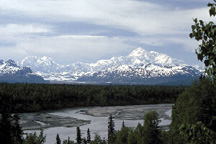I have spent the last 15 years devoting my life to studying the rare Mountain Walrus (Odobenus montanus). I have followed them to their hidden dens and have taken pictures of the elusive beast. Because I have come to care so much for this endangered animal, I am posting my findings here in hopes that others like me will fight for the survival of such a magnificent creature.
|
||
|
|
The endangered mountain walrus lives along the mountain ranges on the West Coast, between Washington and California. A few have been found in the deserts of Nevada and some have even been sighted in Yosemite National Park. Their natural habitat is just below the treelines of mountain scapes, although they will descend further into the forests if food becomes scarce enough. Fierce creatures though they are, they cannot defend themselves against encroaching development. Their habitat has been diminishing since the early 1930's when clear-cut logging became widespread in the United States. | |
| Found in the mountain regions along the west coast, the mountain walruses have had to deal with shrinking habitats as well as hunters. | ||
| Once plentiful, the numbers of the mountain walrus have been reduced to only 30 herds of 10-20 cows and 1-3 bulls each. Since the mountain walrus does not reproduce very quickly, their numbers diminish every year as the rare animal is hunted and their land is lost. Soon this beautiful and surprisingly graceful animal may exist no longer. |
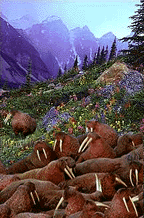
|
|
| Once plentiful, the mountain walruses numbers have been reduced to only 500, down from the 50,000 counted in 1938. | ||
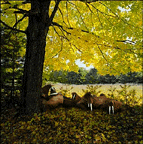 |
The mountain walrus is a social animal. The young cows and bulls will spend a great deal of time together. Much of this time is spent waiting for the older cows to bring back food. While the animals will appear to be sleeping, they are actually acutely aware of their surroundings. If anything tries to approach the herd, the bulls will raise their tusks and make a loud clacking noise. Most animals would be scared away by this; however, the few that weren't suddenly faced these deadly tusks. | |
| Laying in the sun seems to be the favorite past time of these large creatures. After the mating season, it is not uncommon to find smaller herds basking in the sun. When the mountain walruses begin to migrate north, the smaller herds will join together to form their larger communities. |
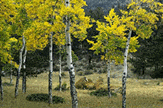 |
|
| This small herd basks in the morning sun in this isolated meadow. Much like their sea faring relatives, after the walruses have spent a fair deal of time in the sun, their skin will begin to turn red. | ||
| A migratory animal, the mountain walrus will travel as far as 3,000 miles in a year. In early winter, when their northern mountain habitat becomes frozen, they began their migration south towards warmer climate and more plentiful food. Some stop in northern California, while others travel as far as the Nevada deserts to find food and mates. In the springtime, after their migration is over, their mating season begins. The cows will then give birth to 1-2 live calves in the beginning of summer. The calves learn to run within 2 weeks of being born, and they can begin their migration back to their northern climes. | ||
 |
||
| A lone mountain walrus makes the trek across the Nevada desert. Perhaps outcast from his herd, he will try to find others of his kind during the mating season and join another herd for the migration north in the winter. | ||
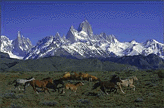 |
Having just eaten a substantial meal, this herd will not have to hunt again for many days. For now, these mustangs are safe from the satiated walruses. Mountain walruses are carnivorous animals. They eat many species of animals, from mice to horses and elk. The cows will venture forth in small groups and hunt for the entire herd. They will bring whatever meat they were able to find back to the dens and all will partake. The younger cows are in charge of looking over the calves while the bulls protect the herd. The hunting cows can bring back enough food to last for a week before having to hunt again. They may travel as far as 10 miles to find food. | |
| Having just eaten a substantial meal, this herd will not have to hunt again for many days. For now, these mustangs are safe from the satiated walruses. | ||
| The cows will hunt by surrounding their prey and then attacking. Silently stalking their prey, they are not heard until it is too late. Looking bulky, they are amazingly agile and quick for their size and can easily outrun even elk and horses. |
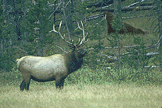 |
|
| Silently stalking this elk, three other cows are surrounding their prey. Before the elk will have a chance to react, the cows will have impaled the elk with their large tusks. | ||
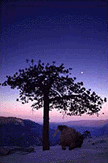 |
The mountain walrus
is agile and fierce, but it cannot fight off hunters and the loss of
its habitat. Only with our help will this wonderful creature be able
to survive. If you are interested in learning more or volunteering
for this cause, please send email to
jynx@end.com.
The mountain walrus needs your help. |
|
| A lone bull seen in Yosemite park is silhouetted next to the Jeffrey tree during a sunset. | ||
